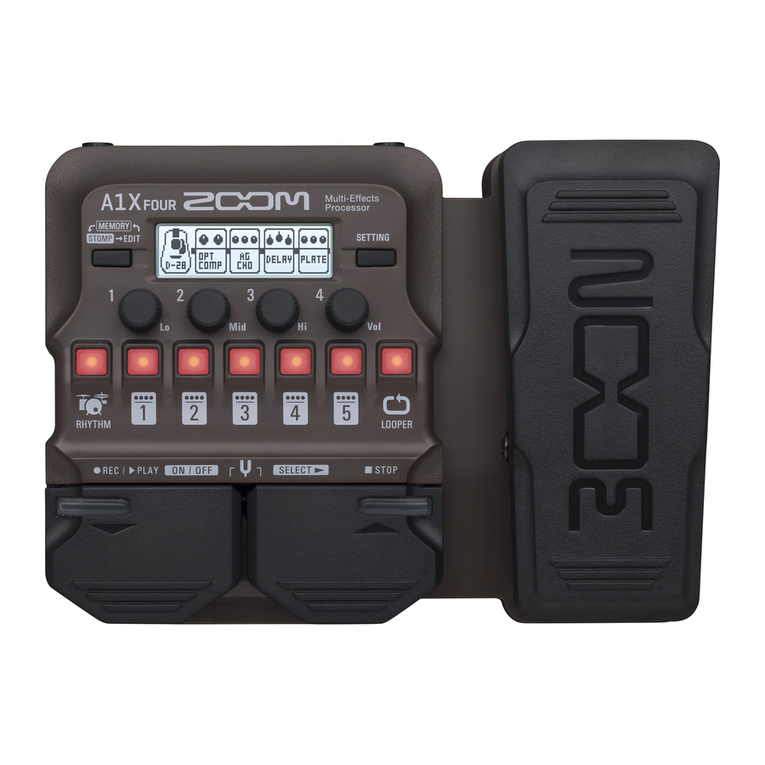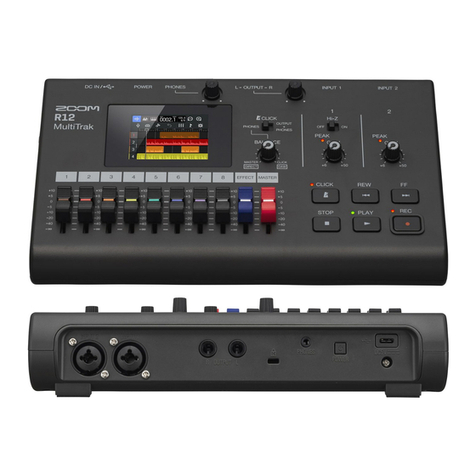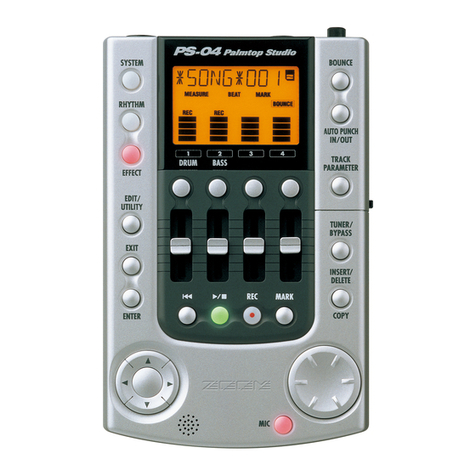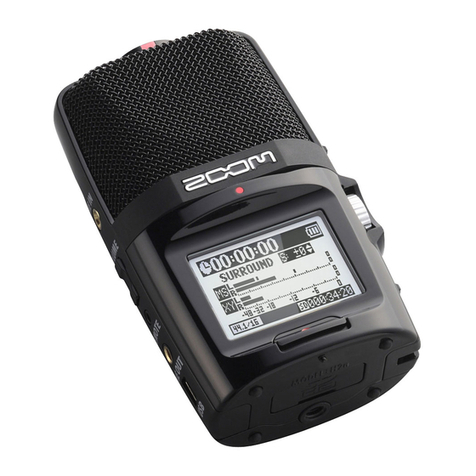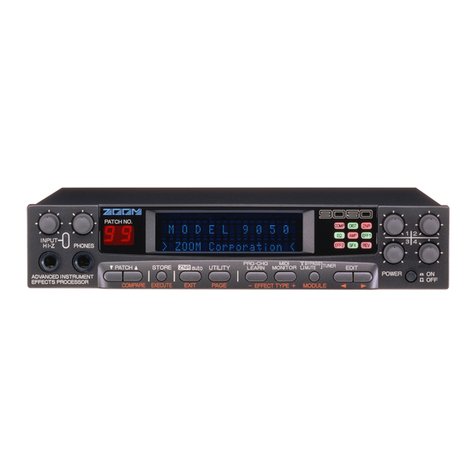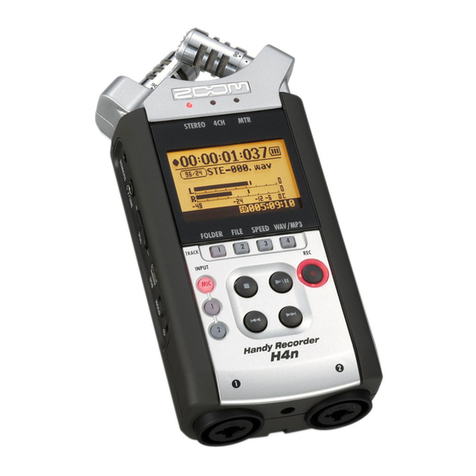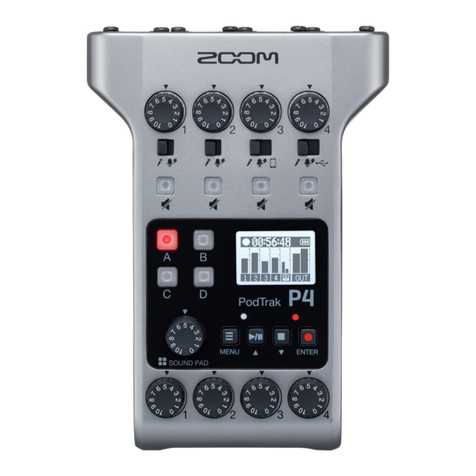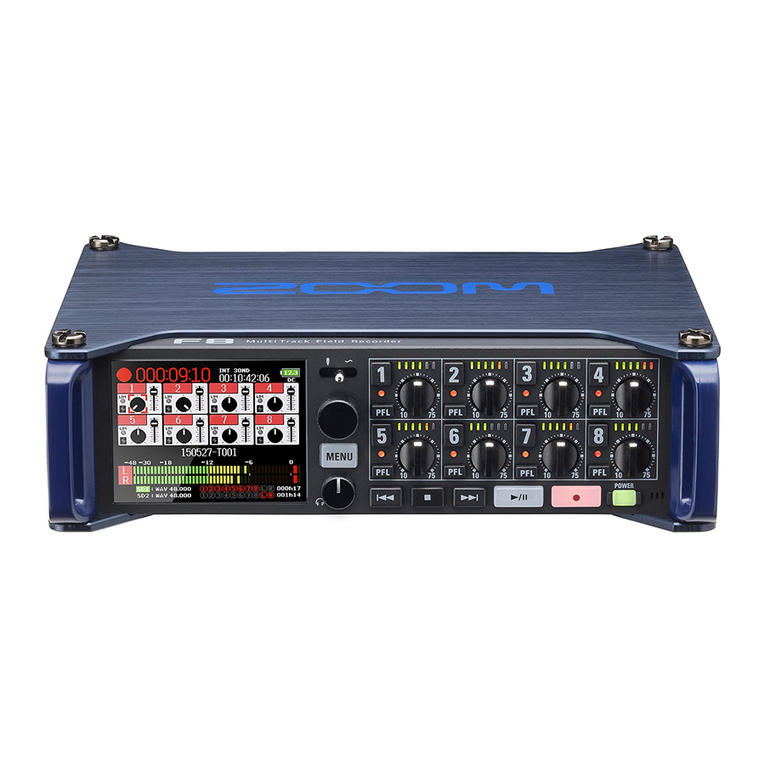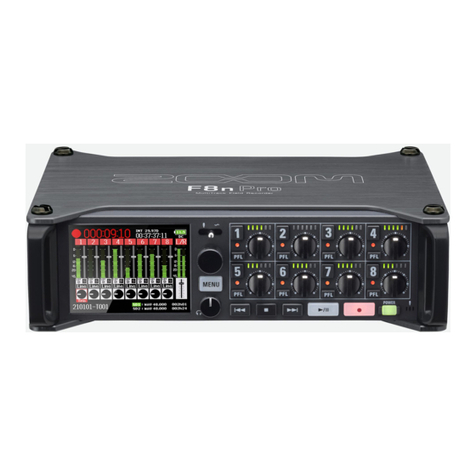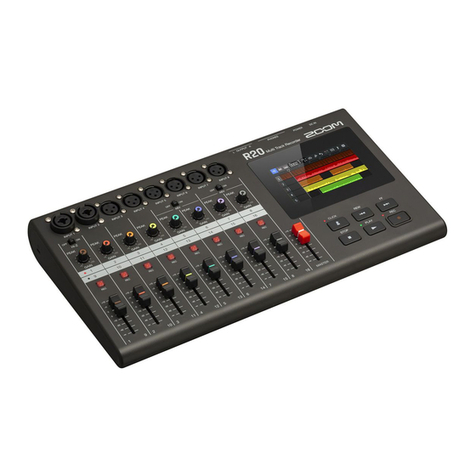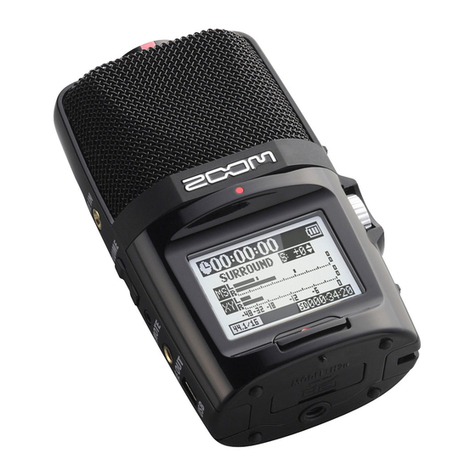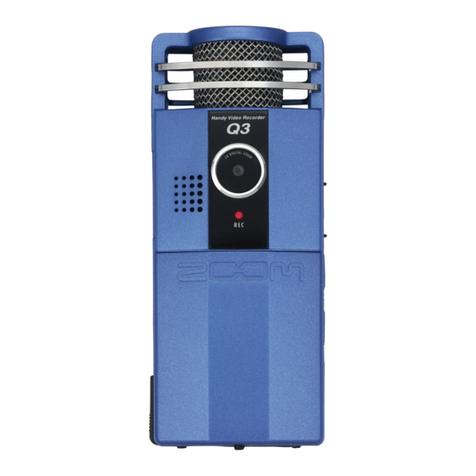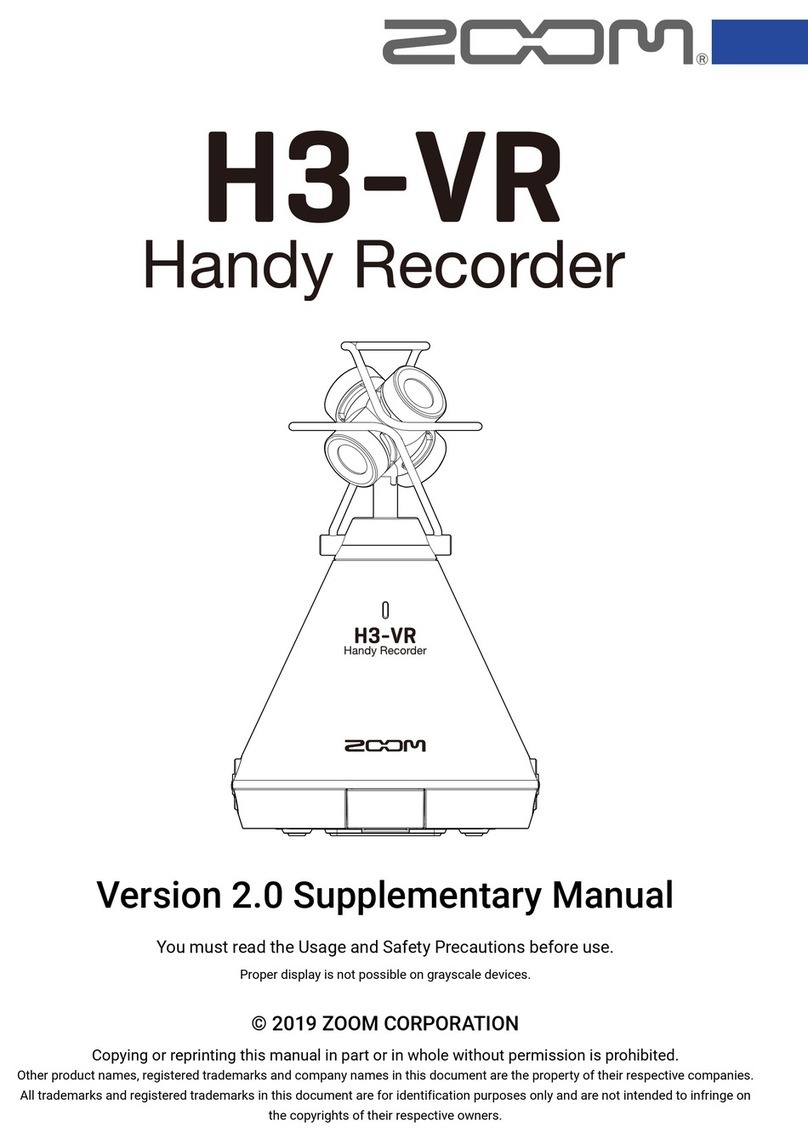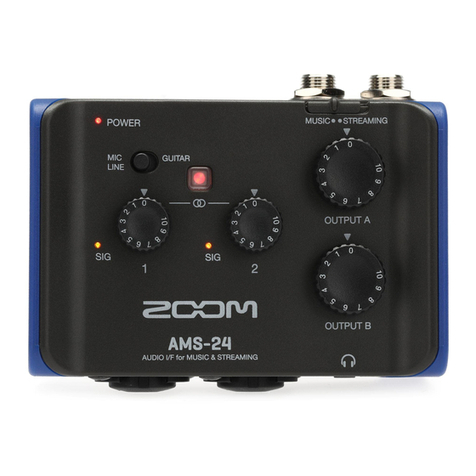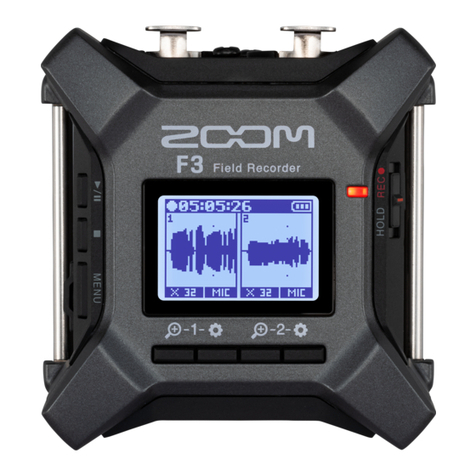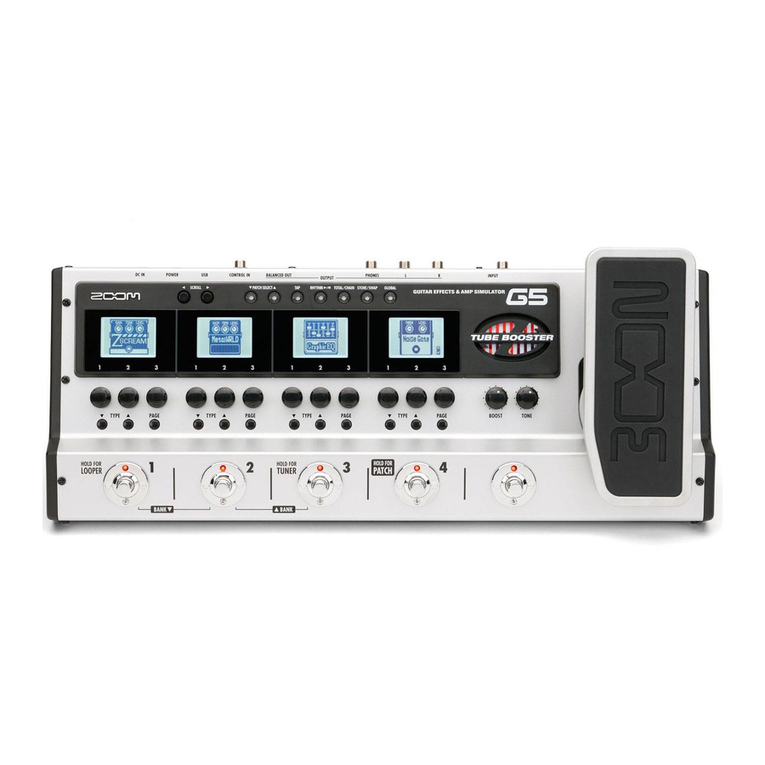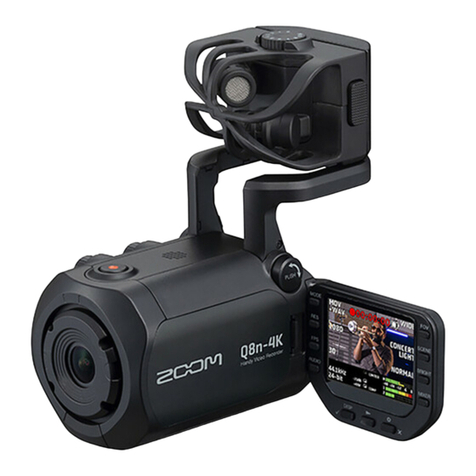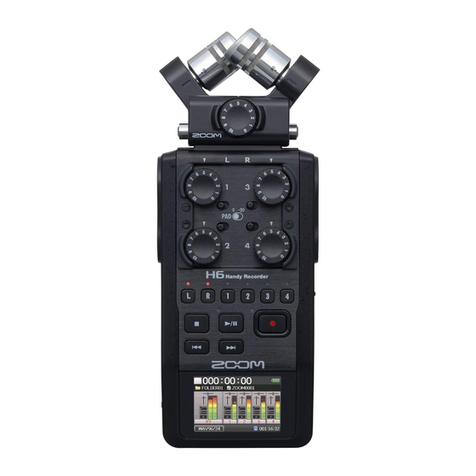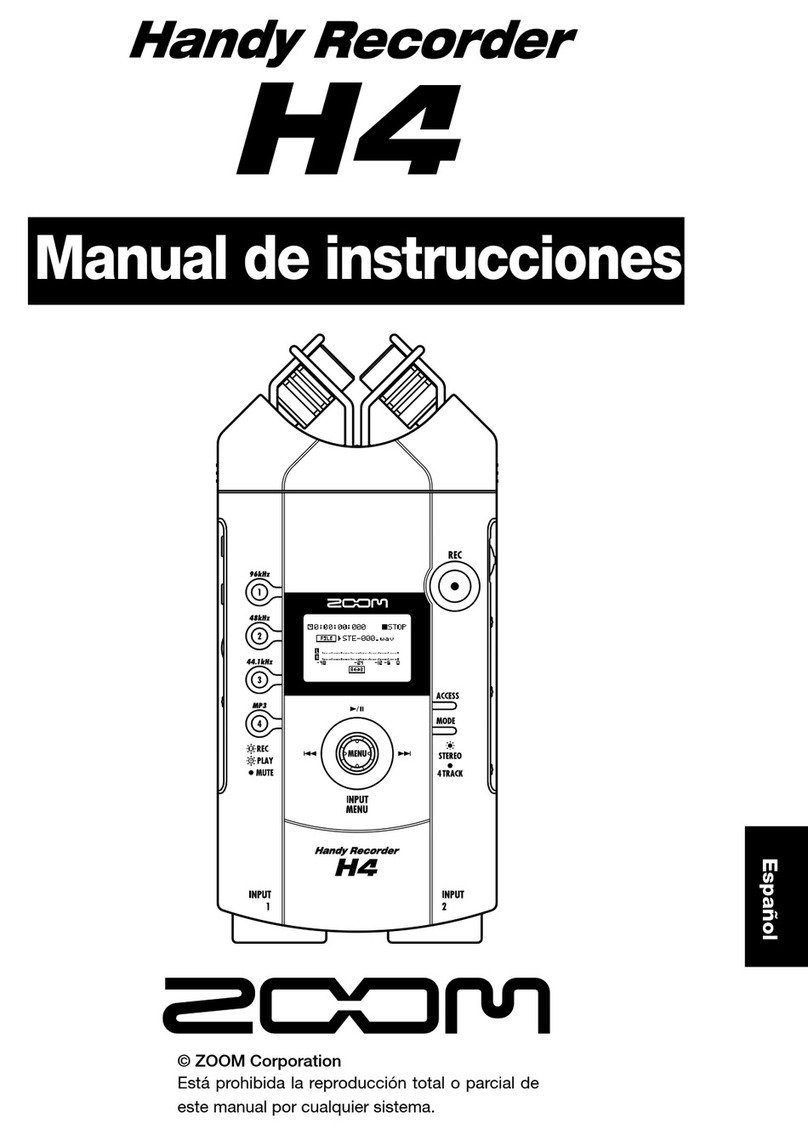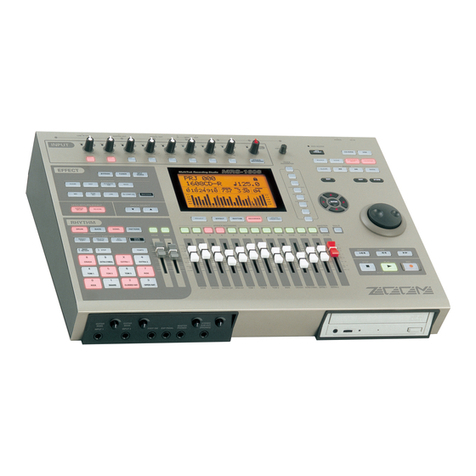Thank you for selecting the ZOOM STUDIO 1202 (hereafter called “The 1202”).
The 1202 is a sophisticated effect processor with the following features:
• A total of 512 preset effect programs (32 effects x 16 patterns) makes the
unit immediately usable for a wide variety of creative applications.
• 44.1 kHz sampling frequency assures high performance, ideal for
processing sound sources such as guitar, bass, synthesizer, etc.
• Full stereo configuration—a first in this class— creates rich, natural
reverb sounds. Using the two channels individually is also possible.
Please take the time to read this manual carefully, in order to get the most out of
your 1202 and to ensure optimum performance and reliability.
Safety Precautions
Please observe the following safety tips
and precautions to ensure hazard-free use
of the 1202.
• Power requirements
The 1202 is powered by the supplied AC
adapter. Do not use any other kind of AC
adapter to prevent malfunction and safety
hazards.
When using the 1202 in an area with a
different line voltage, please consult your
local ZOOM distributor about acquiring a
proper AC adapter.
• Environment
Avoid using your 1202 in environments
where it will be exposed to:
• Temperature extremes
• High humidity or moisture
• Excessive dust or sand
• Excessive vibration or shock
• Handling
Since the 1202 is a precision electronic
device, avoid applying excessive force to
the switches and buttons. Also take care
not to drop the unit, and do not subject it
to shock or excessive pressure.
• Alterations
Never open the case of the 1202 or
attempt to modify the product in any way
since this can result in damage to the
unit.
• Connecting cables and input and
output jacks
You should always turn off the power to
the 1202 and all other equipment before
connecting or disconnecting any cables.
Also make sure to disconnect all cables
and the AC adapter before moving the
1202.
Usage Precautions
• Electrical interference
The 1202 uses digital circuitry that may
cause interference and noise if placed too
close to other electrical equipment, such
as TV sets and radio receivers. If such
problems occur, move the 1202 further
away from the affected equipment. Also,
when fluorescent lights or devices with
built-in motors are close to the 1202, the
unit may not function properly.
• Cleaning
Use a soft, dry cloth to clean the 1202. If
necessary, slightly moisten the cloth. Do
not use abrasive cleanser, wax, or
solvents (such as paint thinner or
cleaning alcohol), since these may dull
the finish or damage the surface.
Please keep this manual in a convenient
place for future reference.
